2019 Kia Forte Vs Honda Civic Comparison

The Honda Civic has beat every compact car we’ve compared it against so far: the Mazda3, Subaru Impreza, and Toyota Corolla. That’s an impressive feat seeing as all of those competitors are much newer than the Civic, which came out in 2015.
The Kia Forte was also recently overhauled, so it’s time to see if it can break the Civic’s winning streak.
Get the Flash Player to see this player.
Style
I don’t normally like the Civic’s style because it’s very overdone with too many angles and huge fake plastic vents, but the sedan version we have here is the best looking civic of the bunch, and the design is way less fussy than the hatchback and coupe. It has a very grown-up style and looks upmarket with this liftback shape. The problem is, Civics are everywhere, so it’s not something you want to buy if you want to stand out.
The Forte now looks like a little Stinger, and I’m thankful it’s not aggressively styled as the Civic. It’s much more subdued and mature, but I like the lighting elements in the front and back because it has a unique signature that helps make the car look more high end. I prefer the way the Forte looks over the Civic and it will age more gracefully.
The Civic’s trunk can hold 15.1 cubic feet of stuff, just a bit less than the Forte’s 15.3 cubic feet, and there’s a similar amount of room for passengers in both cars, though the Civic has a bit more legroom in the back, while the Kia has a bit more headroom up front. The Honda also has a slightly larger turning circle, so the Forte will be easier to do U-turns in.
Powertrains
Under Civic’s hood, we find a 1.5-liter turbocharged four-cylinder engine making an impressive 174 hp and 162 lb-ft of torque. That all goes through a perfectly adequate CVT transmission that returns 36 mpg combined.
The Forte, meanwhile, struggles to keep up. Its 2.0-liter naturally aspirated four-cylinder engine makes just 147 hp and 132 lb-ft of torque. It, too, gets its power to the wheels through a CVT, but it only gets you 34 mpg combined.
SEE ALSO: 2019 Honda Civic vs Mazda3: Which One is the Better Hatchback?
In the powertrain department, the Honda wins pretty cleanly, but the Kia Forte GT is coming out soon, which will have a 1.6L turbo four-cylinder with 201 hp and 195 lb-ft of torque that will make its powertrain much more competitive.
Interior and Features
The Honda Civic has a very busy interior, but luckily, it’s still pretty user-friendly. I’m very thankful that Honda added some physical buttons and a volume knob to the dashboard, but the infotainment system itself still isn’t great. It could be faster and more straightforward.
The Civic has some great features like wireless phone charging, heated seats, Apple CarPlay, and Android Auto, though none of those features are standard. The cabin is well built, the layout makes sense, and Honda does a good job of sneaking in the cheaper materials. I also love all the storage cubbies and places to put things, and the digital dashboard looks slick and displays the information in an easy-to-read way.
SEE ALSO: 2019 Toyota Corolla vs Civic Hatchback Comparison
The Honda Civic comes standard with Honda Sensing, the brand’s suite of safety and driver assistance features. Included in the package is forward collision warning, lane departure warning, collision mitigation braking, road departure mitigation, adaptive cruise control with low-speed follow, automatic high-beams.
The Forte may not make as much power as the Civic, but it does get a lot of other things right. The infotainment system, for example, is much better than the Civic’s. It’s easier to use, the refresh rate is better, it looks more modern, and the menu structure makes more sense, so it’s easier to find what you’re looking for.
The interior design itself is also more straightforward. The lines are simpler and it has turning vents that kind of make you feel like you’re in the more upmarket Stinger. Again, it’s a simple, attractive design. Its only downfall is the materials, which do look a bit cheaper than what’s in the Civic.
Fortunately, you get features to make up for that. Not only do you get all the Civic’s toys, like heated seats and standard Apple CarPlay and Android Auto, all the safety tech and driver assistance (includes standard forward collision assist, lane departure warning, lane keep assist, driver attention warning), but there are also other big car features available like wireless charging, ventilated seats, and a heated steering wheel. The Forte is available with adaptive cruise control, but it only works at highway speeds and isn’t useful in stop and go traffic. With the optional auto-leveling LED headlights and high-beam assist, the Kia Forte is a Top Safety Pick+ from IIHS, a designation the Civic doesn’t get.
SEE ALSO: 2018 Honda Civic vs Volkswagen Golf Comparison
As for space, it’s a toss-up. The Civic has more back seat legroom, but the Forte has more legroom in the front and more trunk space, so it comes down to what you need.
I would never call the Civic’s interior bad, but I do think that the Forte’s is a little better.
Driving Dynamics
It’s no secret that the Civic’s driving dynamics are good. The way it drives is so well sorted regardless if you’re an enthusiast or not. Quiet commuting, chucking it into corners, highway cruising, the Civic does it all without drama. The steering is a particular highlight here — its weighting and responsiveness feel more like a luxury car than a compact sedan.
Power off the line is good and passing on the highway is also not bad with this uplevel 1.5L turbo. The 2.0L can be a bit slow, so the turbo is the engine you want. And as far as CVTs go, the one in the Civic is really good. You never get the drony unresponsiveness of other CVTs. This CVT will help change the reputation of CVTs for the better. The braking is good, the cabin is quiet, and the suspension is both comfortable and sporty.
The Civic just feels refined, like something that might be more expensive. This is a very well rounded car, and I can confidently recommend it to anyone shopping this segment.
SEE ALSO: 2019 Kia Forte Review
The Civic drives a little better than the Forte, but the Forte does drive very well and has a ride quality that tricks you into thinking it’s more expensive. You don’t really notice that 30-hp power gap because the Forte feels just as eager and quick as you’d expect a car in this class to feel. It also has real blindspot monitoring, which is much more useful than the Civic’s LaneWatch system.
Like the Civic, the CVT in the Kia Forte is quite good and doesn’t drone, though when we drove the Kia in the California mountains, it struggled to keep up with traffic. In city driving, though, the CVT is just fine and mostly stays out of the way. The Forte is also smooth and quiet on the highway. The Civic also has a more comfortable driving position than the Forte, especially for taller drivers.
Pricing
A base Honda Civic starts at $19,450, which doesn’t include the $920 destination fee. A base Kia Forte starts at $17,790 plus a $925 destination fee. A base Forte comes with much more stuff than a base Civic and with each trim level increase, the Forte still remains about $2,000 cheaper than the Civic throughout the lineup, all while offering better features.
This is a really close matchup, but the Forte’s combination of features and value make it hard to pass up.
The Verdict: 2019 Kia Forte vs Honda Civic Comparison
The Honda Civic is an excellent all-rounder and sets a high benchmark for this segment. It does everything well and so far, has easily beaten every compact car we’ve compared it against.
The Kia Forte, however, easily meets that high benchmark, and while it might not be downright better than the Civic, it’s just as good, has a better safety rating, and is also more affordable, so we think it’s more than worthy of your consideration if you’re shopping for a compact car.

Jodi has been obsessed with cars since she was little and has been an automotive journalist for the past 12 years. She has a Bachelor of Journalism from Ryerson University in Toronto, is a member of the Automobile Journalists Association of Canada (AJAC), and a jury member for the prestigious North American Car/Truck/Utility Vehicle of the Year (NACTOY). Besides hosting videos, and writing news, reviews and features, Jodi is the Editor-in-Chief of AutoGuide.com and takes care of the site's day-to-day operations.
More by Jodi Lai




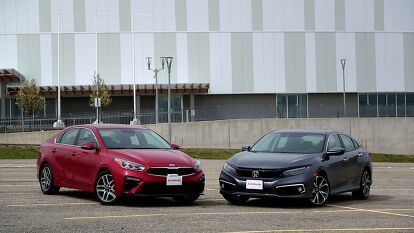

































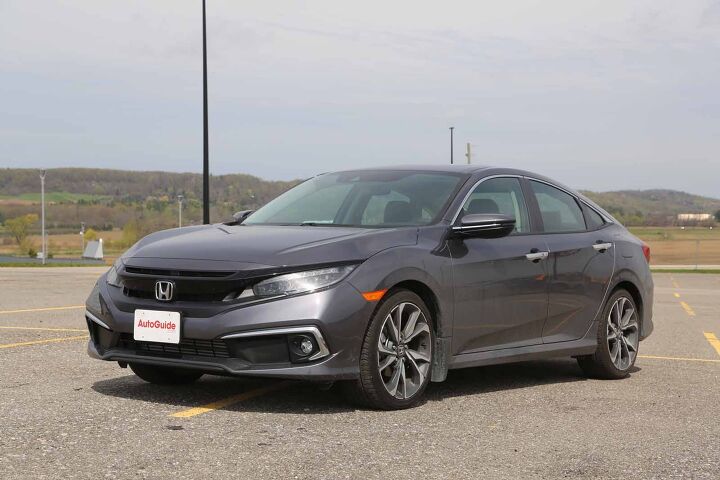



















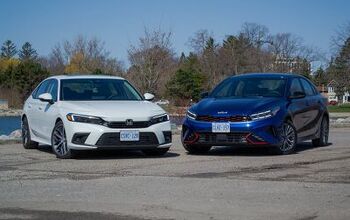
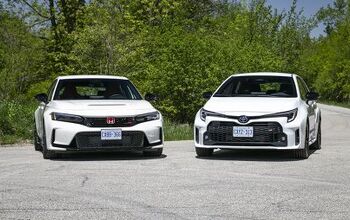
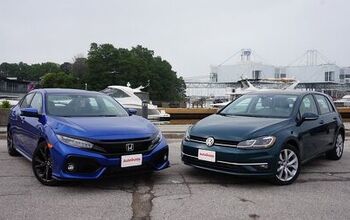
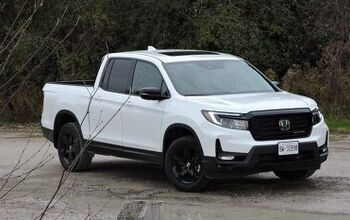
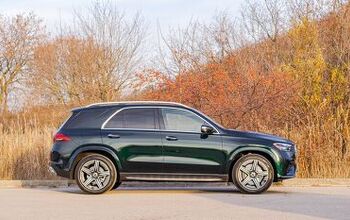

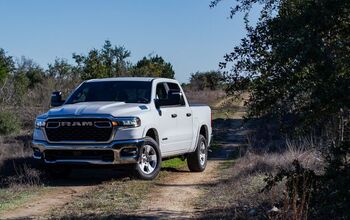

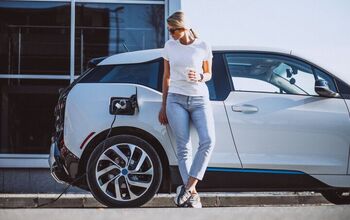


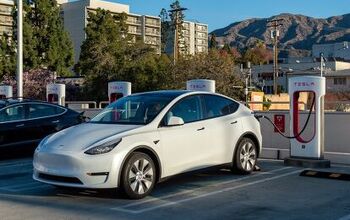

Comments
Join the conversation